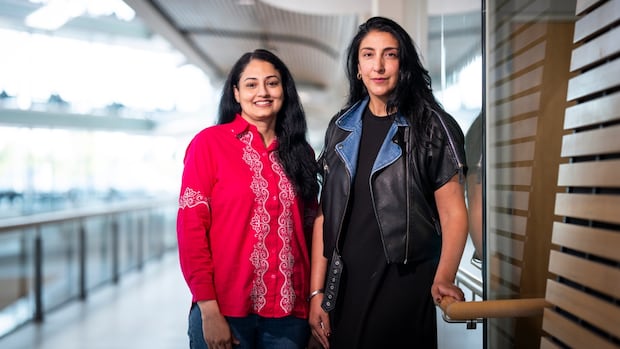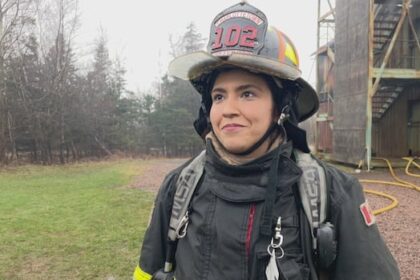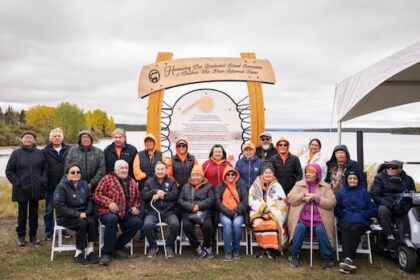British ColumbiaWhile AI can be used for translations, the tools aren’t always accurate — and can lead to inappropriate results, especially in health-care documents. A team of researchers wants to change that — so Punjabi women can better access the medical care they need.Many translations appear to have been AI-generated, overlooking cultural and gender-specific nuances, they sayJohna Baylon · CBC News · Posted: Sep 22, 2025 9:15 PM EDT | Last Updated: 5 hours agoReetinder Kaur (left) and Jessie Kaur Lehail say many English-to-Punjabi translations are not landing with their intended readers, members of the Punjabi community. They say they’re hoping to change that by developing the Punjabi Translation Framework. (Ben Nelms/CBC)An advertisement promoting a community event about dementia in B.C. shows a Punjabi word that roughly translates into English as “mishap” or “accident,” rather than the relatively neutral and intended word, “event.”Another line in the same ad, referring to stigma, uses a Punjabi word that roughly translates to a “black spot on a person’s name” — something akin to disgrace. These are some of the mistranslations that Jessie Kaur Lehail and Reetinder Kaur, co-developers of the Punjabi Translation Framework — a set of guidelines and tools to ensure culturally and gender-sensitive translations — have come across in their analysis of English medical materials translated to Punjabi.”As Punjabi women, we wanted to create documents and comprehension that really lands for Punjabi women in our community,” says Lehail, a communications professional and the founder of Kaur Collective, a media organization dedicated to stories of Sikh women.Lehail says poorly translated materials can create barriers to care.For over two years, Kaur and Lehail have been analyzing medical documents like consent forms, descriptions of medical testing and illnesses, and promotional material.They say they found incorrect words to refer to specific body parts, a mix of English words — which they say can be confusing for target readers — and jargon-filled language fit for academics.According to Lehail, there were also words that should never be used in health documents — words that come close to being curses or could trigger shame. Many appear to have come from literal, word-for-word translations using AI, missing cultural and gender nuances.A slide from Lehail and Kaur’s presentation, featuring their research, shows Google Translate output of two words used in promotional materials that they say are inappropriate for the context. (Jessie Kaur Lehail)”Punjabi language is a gendered language,” says Kaur, a Punjabi instructor and professional translator. “When we use AI, ChatGPT, Google Translate to translate any word in Punjabi [the platform’s output] is default masculine.”She adds that Punjabi has two scripts: Gurmukhī, used in Indian Punjab, and Shahmukhi, used in Pakistani Punjab. “It’s spoken in a similar manner, but it is written so differently. So those kind of understandings are missing in Punjabi translation work,” Kaur says. “And that limits many Punjabi women and community members from accessing those materials.”Dr. Lesa Dawson, a gynecologic oncologist who works with Lehail and Kaur on the framework, says the mistranslations have consequences.She says that in over 30 years of her work, she’s noticed that South Asian women “were far less likely” to access genetic testing for hereditary breast and ovarian cancer genes.Dr. Lesa Dawson works with Kaur and Lehail on the translation framework. She says in her work as a gynecological oncologist, she’s observed the effects that poorly translated materials can have on people, like keeping them from accessing medical care. (Ben Nelms/CBC)As of 2021, nearly 10 per cent of British Columbia’s population is South Asian. According to Dawson, among women getting testing, only about three per cent were South Asian.Dawson says while there could be many reasons for that, the disconnect was clear. “Sometimes the written materials weren’t as good quality and weren’t giving them the the knowledge and the comfort they needed,” she says. “So we need to build all of the things — good verbal communication, good written material so that we can best do our job and serve people,” she adds.Silvia Xalabarde, president of the Society of Translators and Interpreters of British Columbia, says that while AI has helped make translators’ work more efficient, it’s typically used to generate a first draft — the translator is still required to oversee the output and make changes as needed.”Ultimately someone has to be accountable, has to understand if [the text] has been transmitted correctly,” said Xalabarde, who is also the chair the Canadian Translators, Terminologists and Interpreters Council, which certifies translators across the country.”It’s great, but it’s a tool, and if it’s for an important purpose, a human still needs to be involved … who understands both languages and can … be above what the AI can do.”Gurpreet Singh Sahota, a member of the community, thinks the translation framework will benefit many.”A doctor goes to [a member of the community] and speaks in English, they say ‘Yes, yes, yes, thank you.’ But they don’t understand between the lines,” says the Surrey-based journalist.While he appreciates the fact that many signs and documents are translated into Punjabi, Sahota believes there’s room for improvement. Kaur and Lehail say their framework will include guidelines for translators, among other tools to ensure translations to Punjabi are culturally and gender-sensitive. (Ben Nelms/CBC)Kaur and Lehail say they also envision hosting anatomy workshops for the Punjabi community, developing a dictionary and eventually applying the framework to other languages and sectors.”I hope we don’t see translation as one step anymore,” Kaur says. “You know, we started thinking about language translations as a multi-step process, and we include community and patient partners in vetting the translations.””At the end of the day, it really is to ensure that Punjabi women have agency over their health,” Lehail adds, “and are able to comprehend documents and … empower themselves to be in the best health possible.”ABOUT THE AUTHORJohna Baylon is a reporter with CBC News in Vancouver. Email her with story tips at johna.baylon@cbc.ca.
Meet the women trying to make Punjabi medical translations more culturally appropriate











